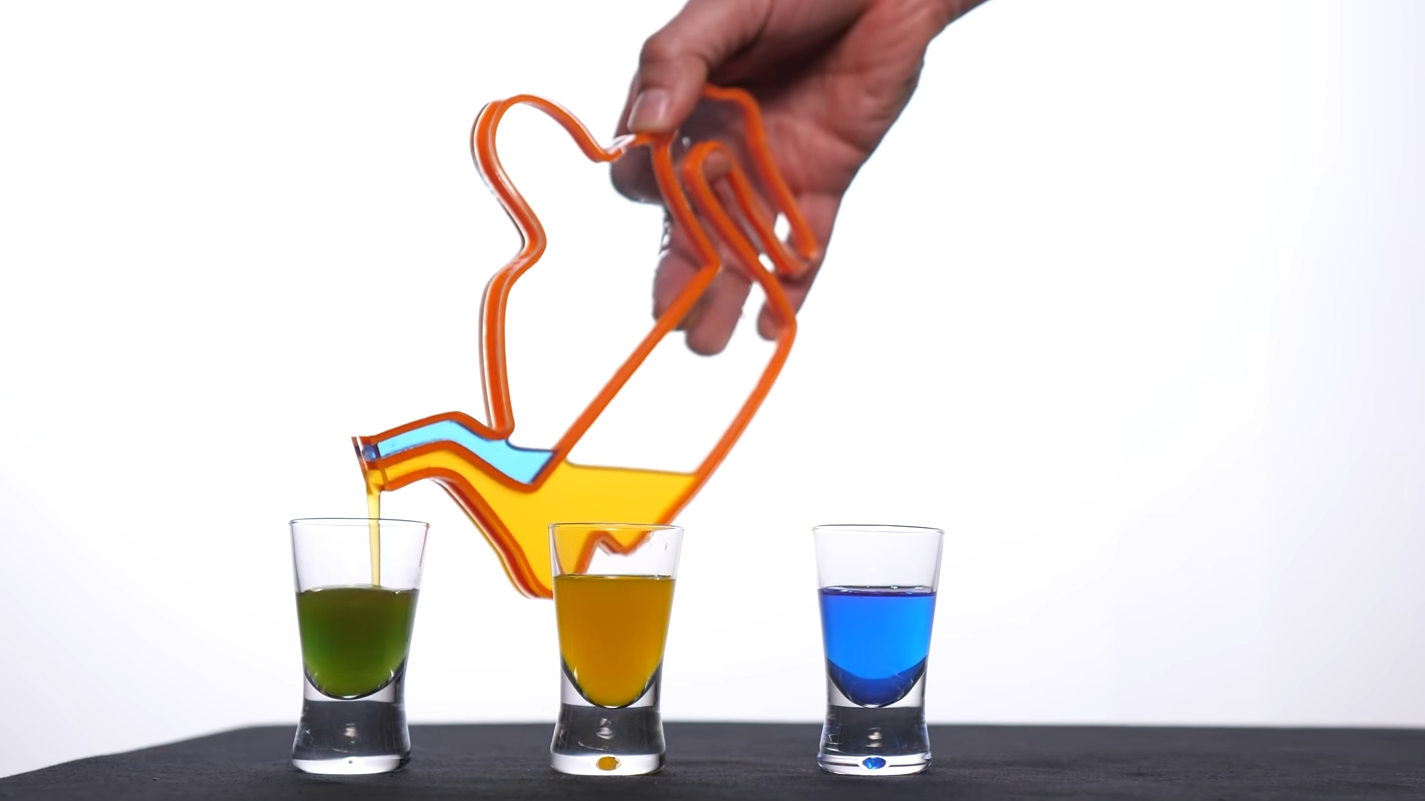#poison
Alice Cooper - der König des Schock-Rocks wird 75 | DW | 03.02.2023
Alice Cooper ist der Altmeister des Horror-Rocks. Er performt seit über 50 Jahren eine opulente und blutrünstige Bühnenshow, die längst Rock'n'Roll-Geschichte ist. Die Idee dazu lieferte ein bedauernswertes Huhn.#AliceCooper #Schock-Rock #SchoolsOut #Poison #Wacken #Horror
Alice Cooper - der König des Schock-Rocks wird 75 | DW | 03.02.2023
#Nanotechnology Used #in Over 2,000 #Food Items Goes Unlabeled Due to Weird FDA Loophole:
Source: https://youtube.com/watch?v=wlAi3KIeTN8
Nanotechnology Used in #Covid #poison darts, 2,000 #Foods Goes #Unlabeled
Extremely small #particles of various #compounds are being used as food #additives, with unknown effects
If you’re one of those people that can often be found in the food aisles of grocery stores reading labels and looking for ingredients you can’t pronounce and don’t want to eat, you’ve most likely noticed several ingredients that, unbeknownst to you, are made using nanotechnology—a process that converts silver, copper, gold, aluminum, silicon, carbon, and metal oxides, among other metals, into atom-sized particles that are one-billionth of a meter in size.
Commonly used nano-sized ingredients include #TitaniumDioxide, which may be the most well-known additive. Others, such as #silicon oxide, calcium carbonate, iron oxides and hydroxides, calcium silicate, tricalcium phosphates, and #synthetic #silicas, are only a few of the additives that may be in your pantry right now.
A New Ingredient
Nanotechnology has become widely used in food production and manufacturing since the #1990s, and its components are unimaginably small—one-hundredth the size of a strand of human hair. They make our food more colorful, brighter, creamier, or crunchier, and they keep it fresher for longer as well.
Nano-sized additives also make some of our medicines more effective.
Nanotechnology is used in the manufacturing of #everyday #products, such as electronics, food and food #packaging, #medicine, #toys, #clothing, #sunscreens, #cosmetics, #dietary #supplements, and #much #more.
While they can provide a myriad of benefits, these increasingly popular product enhancers come at a price, according to #consumer groups and #health experts—and that price is our health.
Health Implications
Because these particles are so small, studies have shown that they can breach the #blood-brain barrier. Researchers are already exploring this quality for drugs meant to treat neurological conditions. But when it comes to food, that’s not a feature anyone is asking for. These particles are also able to circulate throughout the body and get absorbed into the bloodstream and organs. They can #penetrate #cell #walls and potentially create #inflammation and #disease.
“They may pass through the #lining #of the #gut and enter the #bloodstream, which may trigger an inflammatory or immune response,” Harvard School of Public Health’s Georgios Pyrgiotakis told WebMD. “They may also build up in various parts of the body, including the #lungs, the #heart, and reproductive organs.”
In a July 2020 study, a group of researchers at the University of Massachusetts Amherst found that titanium dioxide, which is commonly added to #gum, #candy, #drinks, and #desserts, caused changes in the gut #microorganisms of two groups of mice.
Both were given doses of titanium oxide. One group was fed a low-fat diet and the other a high-fat diet. After further testing to isolate the titanium dioxide effect, both groups had inflamed colons, which can lead to abdominal pain and diarrhea. The obese mice had more pronounced symptoms.
Vaccine Technology
Nanotechnology is currently being used in two of the three #mRNA #COVID-19 vaccines being given in the United States today.
There’s a #ipid #nanoparticle coating surrounding the mRNA in the vaccines, which allows them to penetrate the cell’s wall.
“Lipid #nanoparticles are a vital component of the Pfizer/BioNTech and Moderna mRNA COVID-19 vaccines, playing a key role in protecting and transporting the mRNA effectively to the right place in cells,” stated the Chemical Abstracts Service, a division of the American Chemical Society.
“Of the many COVID-19 vaccines under development, the two vaccines that have shown the most promising results in preventing COVID-19 infection represent a new class of vaccine products: They are composed of messenger ribonucleic acid (mRNA) strands encapsulated in lipid nanoparticles (LNP).”
But scientists have continued to call for greater oversight of these substances by the Food and Drug Administration (FDA) because of their size. Because they easily cross the blood-brain barrier, they may damage it by altering the layer of cells that line the inner wall of blood vessels.
FDA Looks Closer
The FDA, the agency charged with overseeing these additives, has begun to weigh the health risks from nano-sized additives.
The agency currently classifies nanoparticles in food with the designation Generally Recognized as Safe (GRAS) if the manufacturer is already using the same ingredient in its larger, conventional form.
“The particle size distribution of a food substance may affect its ability to be absorbed by the body or to migrate from food packaging into food,” the FDA stated in a 2007 guidance document on nanotechnology in food.
“The FDA does not categorically judge all products nanomaterial or otherwise involving application of nanotechnology as intrinsically benign or harmful. The FDA is monitoring the evolving science and has a robust research agenda to help assess the safety and effectiveness of products using nanotechnology.”
In 2011, the FDA Nanotechnology Task Force was created to coordinate its efforts with research scientists in the United States and internationally. Its goals are to train staff in the latest science at state-of-the-art facilities and to encourage collaborative research projects.
“Production and application of nanoparticles in consumer products is at an all-time high due to the emerging field of nanotechnology,” the FDA stated in a 2017 Grand Rounds webcast. “Direct detection and quantification of trace levels of nanoparticles within consumer products is very challenging and problematic.”
Tiny Particles, Growing Problem
By 2020, the FDA reported that applications for the approval of products containing nanotechnology had skyrocketed in the previous 10 years. According to many experts in the United States, there are 1,900 to 2,500 food products that use nanotechnology.
In response to health concerns about these products, countries around the #world have taken steps to limit or #ban some or all nanotechnology in their food.
In 2010, #Canada #banned nanotechnology in #organic food production. Since 2011, the #EuropeanUnion has required all food to be #labeled if it contains #engineered #nanomaterials. In 2015, the bloc required additional testing to ensure health safety.
In 2018, the European Food Safety Commission was petitioned by a group of scientists within the agency to reject the food additive silicon dioxide as safe for consumption because of nanoparticles in it, until a particle size distribution could be confirmed.
Beginning Jan. 1, 2020, #France banned any foods containing #titanium #dioxide from entering the country.
In the United States, the FDA doesn’t require any products produced with nanoparticles to be labeled or banned, and its guidelines recommend oversight on a case-by-case basis. Research on the long-term effects of ingesting nanoparticles remains scant.
Taming the Poisonous: Mercury, Toxicity, and Safety in Tibetan Medical Practice - Barbara Gerke
This rich ethnographic and socio-historical account uncovers how toxicity and safety are expressed transculturally in a globalizing world. For the first time, it unpacks the “pharmaceutical nexus” of mercury in Tibetan medicine (Sowa Rigpa) where, since the thirteenth century, it has mainly been used in the form of tsotel. Tsotel, an organometallic mercury sulfide compound, is added in small amounts to specific medicines to enhance the potency of other ingredients. In concordance with tantric Buddhist ideas, Tibetan medical practitioners confront and tame poisonous substances, and instead of avoiding or expelling them, transform them into potent medicines and elixirs.
https://heiup.uni-heidelberg.de/catalog/book/746?lang=en
FREE open access book!
Chronological List of Interviews with #Dr #PoornimaWagh I’ve uploaded
The Scamdemic - Covid 19 - SARS COV2 the Virus that Never Existed 8th July 2022 https://www.bitchute.com/video/pm3HTRw4LDt2/
The Scamdemic Part 2 - Masks and Testing with Dr Poornima Wagh 3 Aug 2022 https://www.bitchute.com/video/VNwCRPGvx6BH/
Pandemic Lies Continued. #PCR Tests, What Makes You #Sick 6th Aug 2022 https://www.bitchute.com/video/1XesVenaCqL3/
Dr. Lee #Merritt and #Poornima #Wagh – Are Viruses a Scam 17th Aug 2022 https://www.bitchute.com/video/PTfj8XD53aqa/
The #Jab - It's #Poison And Will #Kill You 25th Aug 2022 https://www.bitchute.com/video/cpMqFXxGMq8q/
Dr Poornima Wagh Defends Herself 1st Sept 2022 https://www.bitchute.com/video/vkJ90dbdwkGY/
#poison #food feeding the slaves parasites !
#Canada
if you needed any more proof that we are run by a demonic deathcult
Snack Food made with #cricket protein now being sold in Canadian supermarkets
The temperature that is used to process bugs cannot be too high or it will carbonize the bugs so is NOT high enough to kill their parasites.
I saw this info and it suggested to me that #bugs will be a significant ongoing vector for parasites and therefore a dangerous choice of food contamination.
Why HAVE they demonized IVERMECTIN?
A parasitological evaluation of edible #insects and their role in the transmission of parasitic diseases to humans and animals
Remigiusz Gałęcki, Rajmund Sokół,Pedro L. Oliveir
Published online 2019 Jul 8
Abstract
From 1 January 2018 came into force Regulation (EU) 2015/2238 of the European Parliament and of the Council of 25 November 2015, introducing the concept of “novel #foods”, including insects and their parts.
One of the most commonly used species of insects are: #mealworms (Tenebrio molitor), house crickets (Acheta domesticus), #cockroaches (Blattodea) and migratory #locusts (Locusta migrans).
In this context, the unfathomable issue is the role of edible insects in transmitting parasitic diseases that can cause significant losses in their breeding and may pose a threat to humans and animals.
The aim of this study was to identify and evaluate the developmental forms of parasites colonizing edible insects in household farms and pet stores in Central Europe and to determine the potential risk of parasitic infections for humans and animals. The experimental material comprised samples of live insects (imagines) from 300 household farms and pet stores, including 75 mealworm farms, 75 house cricket farms, 75 Madagascar hissing cockroach farms and 75 migrating locust farms.
Parasites were detected in 244 (81.33%) out of 300 (100%) examined insect farms. In 206 (68.67%) of the cases, the identified parasites were pathogenic for insects only; in 106 (35.33%) cases, parasites were potentially parasitic for animals; and in 91 (30.33%) cases, parasites were potentially pathogenic for humans.
Edible insects are an underestimated reservoir of human and animal parasites. Our research indicates the important role of these insects in the epidemiology of parasites pathogenic to vertebrates. Conducted parasitological examination suggests that edible insects may be the most important parasite vector for domestic insectivorous animals. According to our studies the future research should focus on the need for constant monitoring of studied insect farms for pathogens, thus increasing food and feed safety.
The CIA has a heart attack gun. This is old news but I just found out about it! https://allthatsinteresting.com/heart-attack-gun #heartattack #CIA #shellfish #poison
Fork the System Podcast E001 Glyphosate & Roundup: Poison in Our Daily Brea
#Glyphosate #Roundup #Poison #DailyBread

Navy Agrees To Comply With Hawaii’s Order To Drain Red Hill Fuel Facility
‘Under the #order, the #Navy is required to #drain its #fuel and may only refuel in the #future if it can meet #state #safety #standards. If it cannot do so, the Navy will have to #move its estimated #180-million-gallons of fuel #elsewhere.’
‘The only acceptable course of action after #defueling the #RedHill #tanks is what #Oahu #Water #Protectors have always insisted is the only #safe option: #ShutDownRedHill. #PERMANENTLY!’
#redhill #toxic #jet-fuel #tank-farm #facility #contamination #crisis #emergency #pacific #island #oahu #hawaii #military #pollution #health #safety #investigation #poison #environment #ecology #aquatic #life #waterislife

Native Hawaiians Fight US Navy for Polluting Island’s Water
https://www.youtube.com/watch?v=7mMsGi11F-U
'Short #documentary about the ongoing #crisis caused by the #US #Navy's #RedHill #fuel-facility #contaminating #Hawaii's #drinking #water and what #kānaka #maoli ( #Native #Hawaiian) #land and water #protectors are doing to stop them!' #ShutDownRedHill
#pacific #island #oahu #military #pollution #poison #leaking #fuel #tanks #civil-disobedience #life #water-is-life
Children poisoned by birthday cake decorations loaded with lead, copper | Ars Technica https://arstechnica.com/science/2021/10/toxic-frosting-children-poisoned-with-lead-copper-from-cake-decorations/
#Merck #Bioxx #Poison #LanceuseDAlerte #BrandyVaughan












